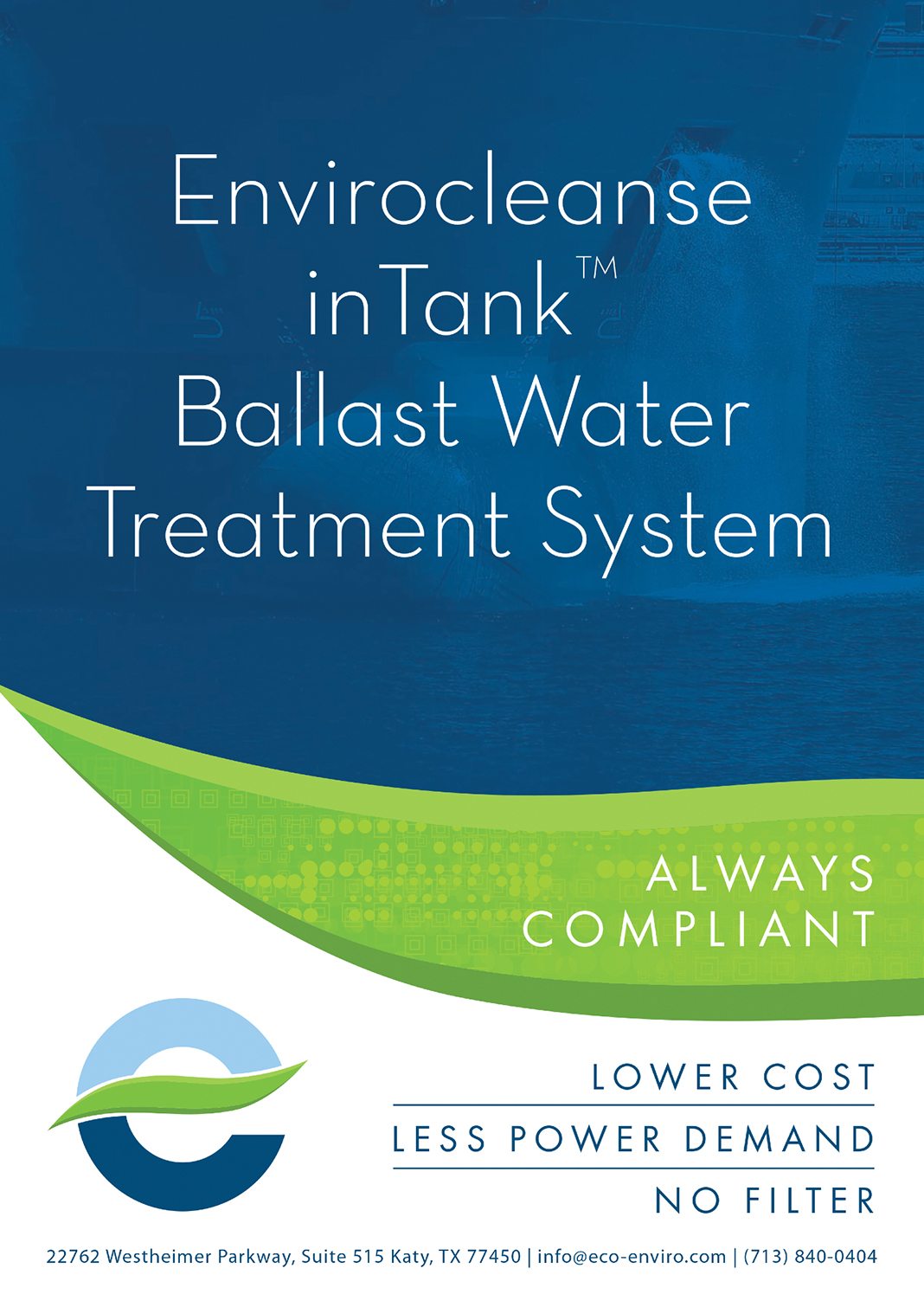Envirocleanse was founded in 2007 as a developer and provider of environmentally safe disinfection using electrochemical activation for applications in the oil and gas fracking, food service and medical industries.
Now, Envirocleanse is setting new standards with the Ballast Water Treatment System (BWTS) it has developed in collaboration with Glosten Marine. The system is designed to prevent the transfer of harmful aquatic species via ship’s ballast water. With patented nozzles inside the ballast tanks and a robust hypochlorite generator, the Envirocleanse inTank BWTS is the most advanced and sustainable system available today.
The operational aspects of the Envirocleanse inTank ballast water treatment system guarantee verifiable compliance for ship owners and operators, and because it does not require filters or changes to current ballasting operations, it is an affordable and efficient solution.
What are the advantages of the Envirocleanse system?
This booklet details how the Envirocleanse inTank BWTS works, explaining the details of its operation and how it differs from other available systems. Following this, it lists how the unique operational features of the inTank BWTS system offer a number of significant advantages for consumers. These include:
-
- • No filters means no downtime in port;
-
- • Treatment process takes place automatically, without supervision in transit;
-
- • Easy to operate;
-
- • Continual dosing in transit allows a smaller operating unit;
-
- • Uses power during non-peak demand times;
-
- • No regrowth potential in transit; and
-
- • Able to meet demands of challenging water.
The ballast water treatment system is flexible and offers multiple options for producing and distributing the active ingredient, sodium hypochlorite, such as bulk dosing or an on-board electrochlorination generator.
The booklet also explains how regulations of ballast water treatment were established, and how the BWTS can aid maritime operators in meeting requirements in an easily operable, convenient way.
With the International Maritime Organization’s Ballast Water Treatment Directive entering into force this year, it is vital that fleet owners take new solutions into account to ensure that they meet regulatory requirements and reduce their impact on the environment.


